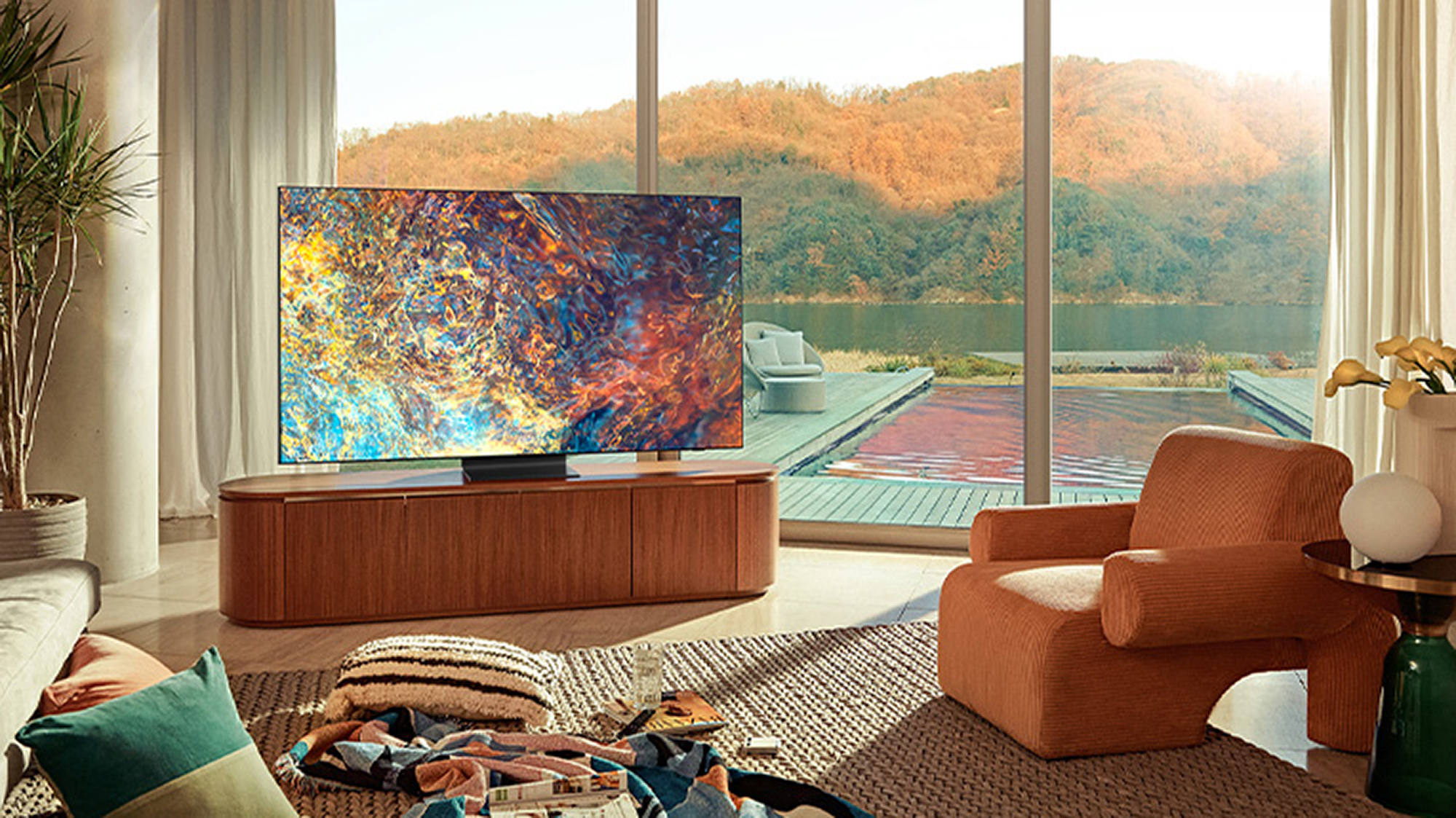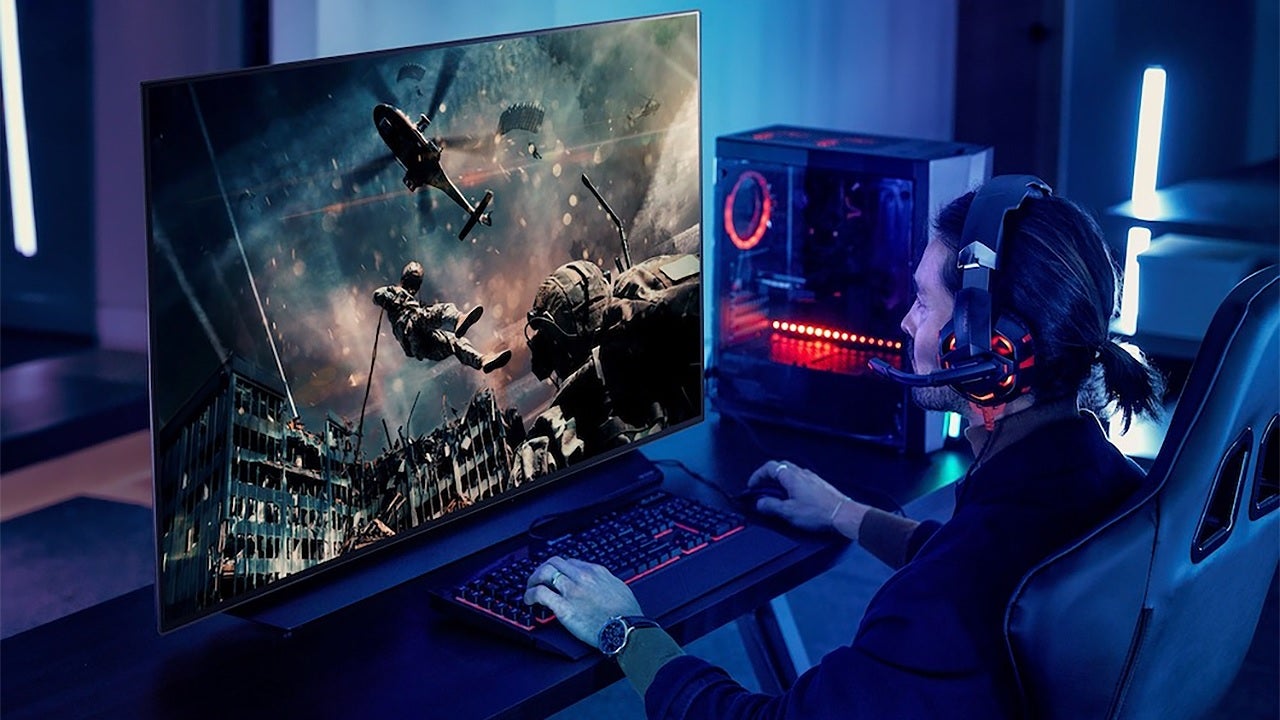Mini LED vs OLED TV: Which is the best?
The Mini LED vs OLED TV battle is on and the winner could earn a place in your home

Mini LED vs OLED TV, it's the battle of the modern television age. Long has OLED held the crown as the best format of TV with even QLED merely nipping at its heels. But now with the introduction of Neo QLED (Samsung), QNED (LG), and more options from Philips and TCL – all featuring Mini LED tech – could OLED be in for a real challenge? Topping our best TVs list is still OLED, but that may be about to change.
To be clear Mini LED is what is found in the latest screens that are on offer from just a few manufacturers right now. At time of publishing this is still an emerging tech so expect all manufacturers to offer some form of this soon.
To get the most out of either type of 4K TV, the best HDMI cables can help. Since they're affordable it's worth factoring that little extra into the cost if you want the best next-gen console or Ultra-HD Blu-ray experience.
So, OLED versus Mini LED, which is better?
Mini LED vs OLED TV
An OLED TV works by lighting up each individual pixel. So despite that Organic Light Emitting Diode (OLED) name, this doesn't actually use LEDs. Instead you have a carbon-based film between two conductors that can be illuminated by passing an electric current through it.
This description may help clarify: Imagine an egg carton with a gas settled into the spaces (stick with us here). As electricity is passed into each egg hole that one lights up a color and brightness, varying based on the power. Think of those as your individual pixels.
Meanwhile, Mini LED uses an array of tiny LED lights across the back of a screen to light up the Quantum Dots, as Samsung calls them, which create the light type on the LCD panel. All that means far more control over which parts of the screen are lit and which are not.
Sign up to receive the latest news, reviews, buying guides and deals direct to your inbox
The result of all this shrinking? A more defined finish on colors and less bleed. So rather than having the black of James Bond's tuxedo slightly haloed by the white light of his shirt, the two can be clearly defined in a more lifelike reproduction.

It's not OLED level, since the Quantum Dots aren't as small as pixels being individually lit. However it can go brighter and as such, Mini LED is far better than regular QLED offers.
Mini LED vs OLED TV: Which is clearer?
Both OLED and Mini LED offer 4K and HDR resolutions – or 8K in the case of Samsung. The end result can vary to the eye based on the processing of that particular brand. Consistency is found in the richness of blacks, which can help to create more tonal layering in dark areas rather than just being plain black – something OLED excels at.
Lots of filmmakers use darker shots and low light to create mood. That means that a decent black displaying TV can immerse you in a cinematic world more deeply, some would argue.
OLED is still the best format for displaying rich blacks. This is because each individual pixel can be switched on or off. So a white can be next to a black without that black having any light bleed into it. Whereas on Mini LED screens the backlight can mean there is a little bleed so blacks aren't as true as they were intended to be.
Mini LED vs OLED TV: Which is brighter?
While OLED wins on the blacks, it's Mini LED which pushes the limits for brightness. An OLED typically can push out under 1,000 nits of peak brightness whereas a Neo QLED can hit the 2,000 nits mark.
Do you want more brightness though? Sure, it's good for daytime viewing and some might find the brighter image more immersive. But it can mean sacrificing color as the brighter light bleeds it out. That said, the Mini LED tech is far better than LED at keeping the color rich even with those brighter images.

Mini LED vs OLED TV: Which is smoother?
When it comes to gaming, or sports, a judder-free image is what we want. Since OLED can near instantly turn pixels on and off, it is perfect for smooth video reproduction.
OLED offers a refresh rate as fast as 0.001ms which makes it ideal when used with the next-gen video games consoles. A fast response time, especially online, can be the difference between life or death in some games. With newer 120Hz refresh rates on Mini LED screens, these are faster than ever, but are still simply under the 10ms mark.
Mini LED vs OLED TV: Which looks better?
Some Mini LED TVs look great, as these are smaller than the previous generation of tech. This varies by manufacturer but if you opt for the high-end Samsung 8K Neo QLED model, for example, you get a really beautiful finish with drilled side speaker grilles and an overall slim finish.
However, OLED is so ridiculously thin that even in the most basic models it still looks like a stunning floating screen. These do require back boxes to hold all the processing and port nubbins, but with some design work arounds you can have a screen rolled onto your lounge like wallpaper if you want.

Mini LED vs OLED TV: Which is cheaper?
OLED has been too expensive for many, for years. This is down to the process of making them, which means only a certain number of the panels made actually survive – so there's lots of costly waste for the panel makers. As this has been refined over the years, pricing has dropped. Now you can pick up an OLED TV for just over $1,000.
Mini LED is new tech but follows on from QLED meaning pricing can be kept relatively low. This is still expensive at this stage though, since it's new. As such you're looking at a similar price to OLED but there are models at just under the $1,000 mark, making it marginally cheaper than OLED.
Mini LED vs OLED TV: Which should you choose?
If your budget stretches to OLED then you'll get the best blacks, more smooth refresh rates, affordable running costs and richest of colors.
But if you need a bright TV, where size and refresh rates aren't much of an issue, then Mini LED is still the best option over other QLED and LED TVs out there.
This is the first generation of Mini LED TVs so expect the tech to continue to improve in the coming years. OLED is getting brighter each year too though so the competition is still fierce.
Discover more guides for tech at home…
Best cell phone provider
Best cordless phones
Best home computers
Best blu-ray players
Best DVD players
Luke is a veteran tech journalist with decades of experience covering everything from TVs, power tools, science and health tech to VPNs, space, gaming and cars. You may recognize him from appearances on plenty of news channels or have read his words which have been published in most tech titles over the years. In his spare time (of which he has little as a father of two) Luke likes yoga, surfing, meditation, DIY and consuming all the books, comics and movies he can find.

